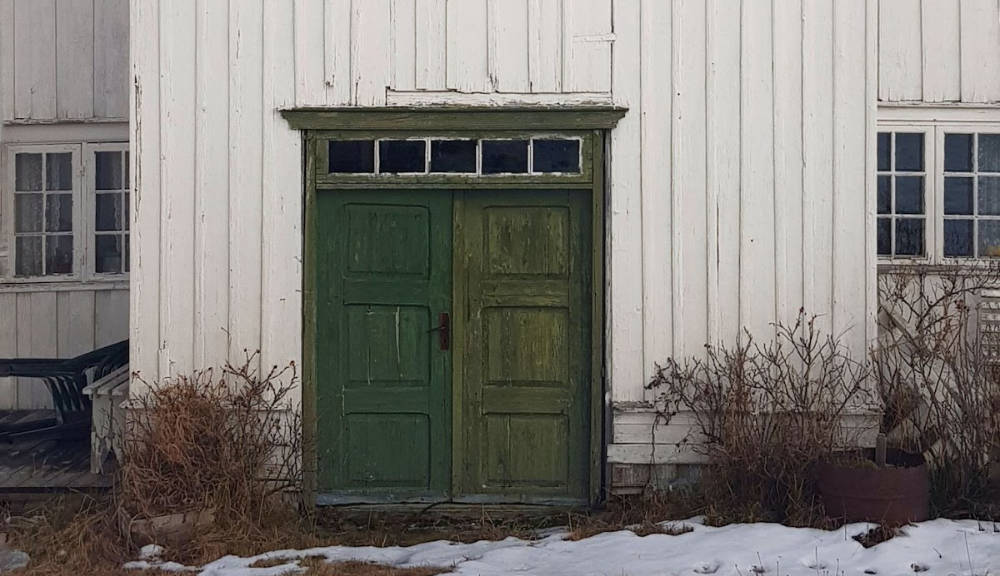
Restoring doors, part 2
Module 2 – The door as a system
The door is one of the most classic carpentry products in Norwegian houses. It has an clear function and structure. Old doors can be charming and elevate the impression of a room or a facade. They can also be annoyingly crooked, not close properly, push against the frame, squeak or go off the hinges. There are many elements that must be in place for a door to work well. Sometimes a small adjustment can work wonders, while other times larger interventions are needed. In this course we will consider the door as a structure and as a system.
We will also look for clues from those who have walked through the doors. Who has used them? Have they closed gently, with a bang or not at all. Have they greased the hinges, opened with the hips, shoulder or a small kick? Have the doors been repaired before? All this information can help us make good choices and not restore the doors to death.
Day 1
Introduction; All parts of the door and their function.
Practical work; Insert a frame
Day 2
Lock, key, handle, fittings.
Practical work; Hinge adjustment. Handle adjustment. Adjustment of the locking system. Is it allowed to use a plane?
About Instructor
Master carpenter Ilker Dursun has over 20 years of experience as a furniture maker and restoration craftsman. In 2021, he completed a BA in cultural heritage and conservation knowledge at UiO. He is based in Oslo and has good knowledge of classic filling doors from apartment buildings and historical buildings in the capital. He is concerned with the functionality of the door and has a pragmatic approach to restoring doors in use: Good function ensures a long life and reduces the risk of replacement. The door is often better preserved than the wall it sits in and can tell a lot about the history of the house. In addition to appreciating old doors as historical documents, Ilker is also enthusiastic about the aesthetic qualities that life and diligent use can produce. So he likes to approach these surfaces with a light hand.